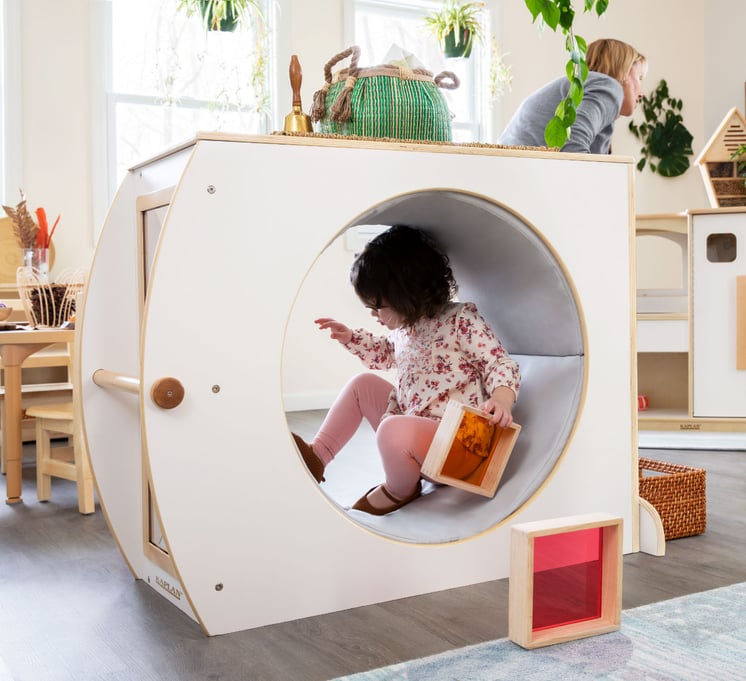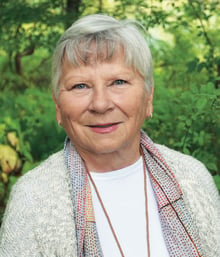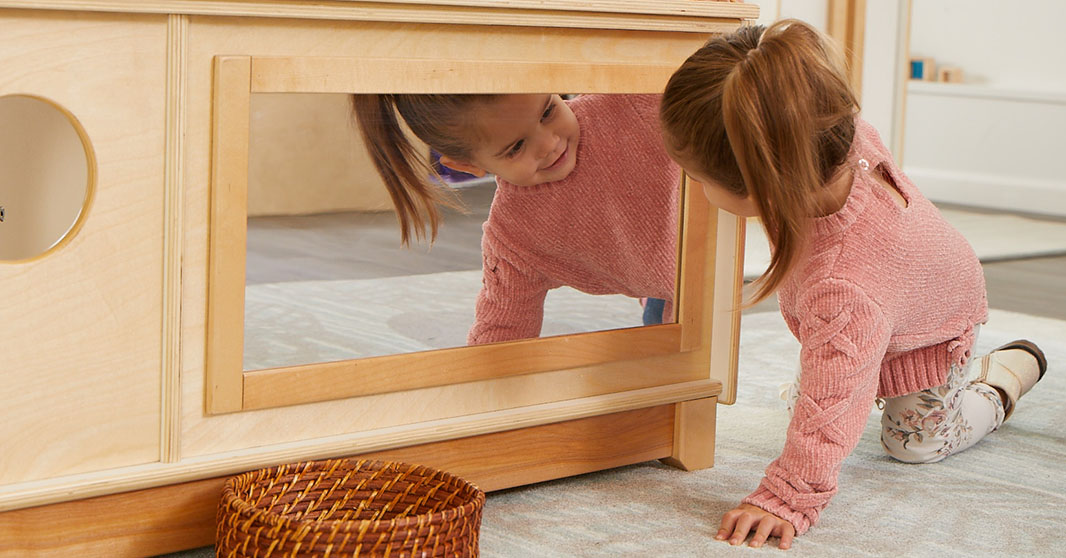Toddlers are physical thinkers who use their whole bodies to process the world around them. Because toddlers are wired to use every sense, the early childhood classroom should provide a wealth of sensory opportunities for these wee ones.
Often, we think of the basic five senses when planning sensorial experiences for young children. But it is important to also consider including opportunities for balance and movement. Encouraging movements such as spinning slowly, rolling or crawling around on the floor, stomping, or rocking back and forth gives toddlers the experience of practicing balance and understanding where their bodies are in space.
Offer low spaces that invite crawling; even though toddlers have started walking, they still enjoy crawling on all fours. Provide a challenging apparatus such as a low balance beam. The Sense of Place for Wee Ones collection even includes balance experiences for infants. For example, infants who are learning how to pull themselves up can engage with a pull-up bar that is strategically placed at the end of Hideaway Cove.

The Sense of Place for Wee Ones furniture collection is designed so children can practice important movement behaviors such as making and unmaking, turning and stopping, hiding and revealing, attaching and detaching, and propelling and hindering. This furniture collection is intentionally designed so children can play with the furniture pieces from the front, back, sides, and top. At the heart of this uniquely designed collection is a focus on four key movement characteristics of wee ones:
- Movement Connoisseur
- Enthusiastic Improviser
- Sensory Seeker
- Pathfinder
 About Sandra Duncan, EdD
About Sandra Duncan, EdD
With over 45 years of experience and a doctorate in education, Dr. Sandra Duncan has a wide and varied background in early care and education. She has extensive experience in working with young children and parents, teaching at the university level, designing professional development programs for practitioners, and authoring several teacher resource books. Now, Dr. Duncan is bringing her years of theory and best practices to the early childhood classroom in the form of the Sense of Place furniture collection - an exclusive to the Kaplan portfolio of furniture offerings. With its modern aesthetics, many authentic and true-to-real-life details, and considerations for what the youngest of children need to thrive best in their first learning environments, the Sense of Place collection provides ECE educators a beautiful backdrop to creating the most meaningful and lasting of learning experiences for years to come.
Dr. Sandra Duncan has also written several books using her expertise including Through a Child's Eyes, Rethinking the Classroom Landscape, The Honeycomb Hypothesis, Inspiring Spaces for Young Children, Rating Observation Scale for Inspiring Environments.

